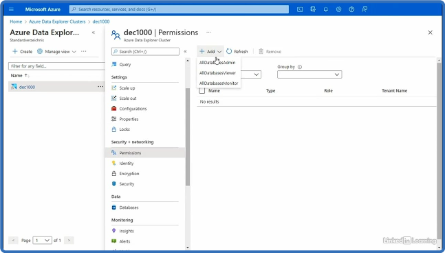
Kusto Query Language (KQL) – Part 1
Posted on 12 Mar 09:20 | by AD-TEAM | 3 views

Kusto Query Language (KQL) – Part 1 | Udemy [Update 02/2023]
English | Size:
Genre: eLearning
A Deep Dive Into KQL Along With a Review of Azure Data Explorer (ADX)
What you'll learn
An overview of Azure Data Explorer (ADX)
Azure Data Explorer Web UI and Log Analytics Demo Site
A deep dive into the essentials of KQL
The most commonly used KQL operators and functions
Aggregating data with KQL
Exporting data to Excel and Power BI
Ingesting Data into Azure Data Explorer
There is a good chance you have already used Azure Data Explorer (ADX) to some degree without knowing it. If you have used Azure Security Center, Azure Sentinel, Application Insights, Resource Graph Explorer, or enabled diagnostics on your Azure resources, then you have used ADX. All these services rely on Log Analytics, which is built on top of ADX and is queried using KQL.
Like many other tools and products, ADX was started by a small group of engineers in Israel around 2015. They needed to solve a problem. A group of developers from Microsoft's Power BI team needed a high-performing big data solution to ingest and analyze their logging and telemetry data. So, of course, they built their own because they could not find a service that met all their needs. This resulted in the Azure Data Explorer, also known as Kusto.
So, what is ADX? It is a fully managed, append-only columnar store big data service capable of elastic scaling and ingesting literally hundreds of billions of rows daily. ADX offers:
- Low-latency ingestion and elastic scaling
- Security
- Cost-efficient (pay as you consume)
- High availability
- Time Series Analysis
- Super fast query performance via KQL
- Custom built solutions
As great as ADX is, this course is mostly centered around KQL (Kusto Query Language). KQL is the query language for managing all logging and telemetry data stored in ADX. Even if you do not use ADX directly, you will still use KQL for monitoring, analyzing logs, managing assets, exploring security data, and exploring Application Insights data. KQL is ADX's read-only query language that has many similarities with SQL, such as working with tables, columns, and providing functionality for filtering. KQL supports a subset of SQL, and SQL statements can be executed and converted to KQL using the EXPLAIN keyword, reducing the learning curve for engineers with an SQL background.
This is part 1 of a two part series covering ADX (lightly) and the KQL language (mostly). The goal of this course is to cover the basics. At the end of this five hour course you will have a solid understanding of what KQL can do. And it can do a lot! In some respects I like it better than T-SQL which I have used for over 20 years.
Part 2 of this course goes well beyond the basics and will cover many advanced KQL topics and scenarios (and some more ADX).
Who this course is for:
- Anyone needing to analyze data from Azure Security Center, Azure Sentinel, Application Insights, Resource Graph Explorer, or enabled diagnostics on your Azure resources
- Anyone wanting to learn the amazing Kusto Query Language

Related News
System Comment
Information
 Users of Visitor are not allowed to comment this publication.
Users of Visitor are not allowed to comment this publication.
Facebook Comment
Member Area
Top News


